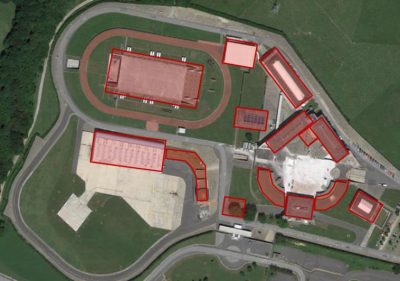DH systems were designed many decades ago. In most cases, they are designed and operated to distribute heat at about 80 °C to consumers. RELaTED pursues the development of DH networks with service temperature levels as low as 40-50 ºC. “D.2.1 Low temperature concepts” deliverable reports on the RELaTED low temperature concepts, considering potentialities and limitations imposed by distributed energy sources (DER), low temperature (LT) and ultra-low temperature (ULT) distribution systems as well as heat and domestic hot water demand.

Operational small corporate DH network in Iurreta (Basque Country, Spain).
In RELaTED Task 2.1 the low temperature district heating concept is being defined, and some of the possibilities for integrating distributed energy recourses into a low temperature district heating network are being analysed and compared.
The low temperature concept is defined by temperature levels, the possibilities to improve renewable share/CO2-emission with a more diversified production with distributed heat sources, the ability to expand the district heating networks to new districts without changing the existing network and optimize the performance of the network and thereby operate more feasibly.
Different technology options and barriers to achieve low temperature networks are being discussed on both building, network, and energy source level. On building level, the barriers are about heat emitters and domestic hot water production. On network level optimizing the pipe system length, dimension and insulation level are addressed. Some of the energy sources options for distributed heat sources in ultra-low district heating systems (ULT DH) are discussed.
For each of the four demo sites the development activities within RELaTED are presented and thoughts about how the RELaTED concept can be implemented and evolve on a longer term are shared.
The collected data about the networks in the demo sites are analysed and the heat loss on subnet level are calculated.
For each of the four demo sites the development activities within RELaTED are presented and thoughts about how the RELaTED concept can be implemented and evolve on a longer term are shared.
Selected development activities for distributed energy sources and temperature levels are analysed and the calculated cases for each site are compared on the parameters: share of distributed energy consumption, total energy consumption, share of solar energy and waste, performance indicator factors for primary energy, CO2, and renewable energy ratio.
These results will be used in the succeeding work packages of RELaTED to investigate further the architecture of the ULT concept (WP2), design and adaption of subsystems to facilitate the use of distributed energy resources (WP3), analyse the economic feasibility and business case (WP4) and prepare and conduct demonstrations (WP5), of the RELaTED project.
